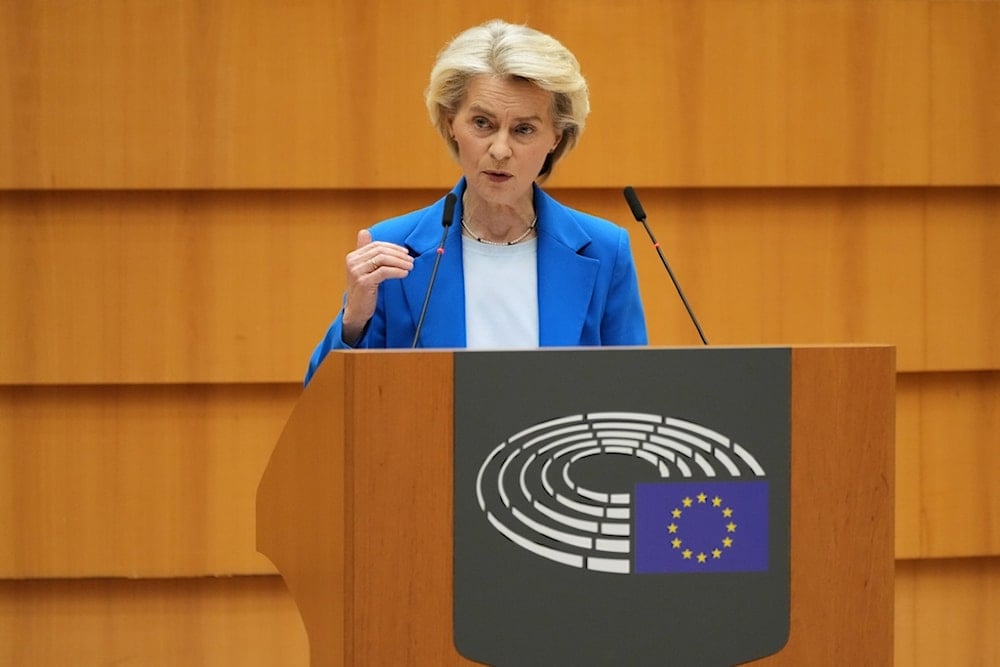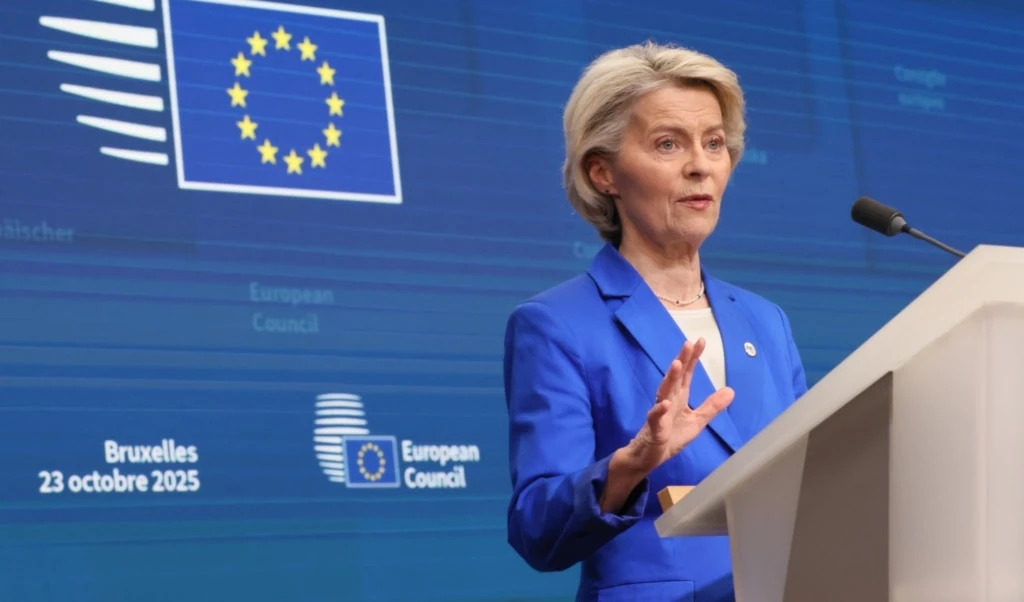Von der Leyen backs Ukraine reparations loan via Russian assets
EU chief Ursula von der Leyen urges a reparations loan for Ukraine using frozen Russian assets, calling it the most effective support method.
-

European Commission President Ursula von der Leyen addresses the plenary on the 2028-2034 Multiannual Financial Framework at the European Parliament in Brussels, Belgium, Wednesday, Nov. 12, 2025 (AP)
The EU member states have three possible avenues to address Ukraine's financing needs, said EU Commission President Ursula von der Leyen on Thursday, highlighting a reparations loan funded by frozen Russian assets as the most effective option.
She stated in a speech to the European Parliament that other possibilities include the EU tapping into "headroom" in its budget to generate funds or reaching an agreement among member states to raise the necessary capital independently.
"Option three is to have a reparations loan based on immobilized Russian assets. We give a loan to Ukraine, that Ukraine pays back if Russia pays reparations," she said, emphasizing that "this is the most effective way to sustain Ukraine's defence and its economy."
Freezing assets since day 1
Since the start of the war in Ukraine in February 2022, the European Union, along with G7 countries, has frozen a significant portion of assets belonging to the Russian central bank and other state-linked entities.
These frozen Russian assets include foreign-currency reserves, government bonds, securities, and cash deposits held in institutions abroad.
As of late 2023, the total value of these immobilized assets is estimated at around US$300 billion, with a large portion held in Europe, particularly at Euroclear, a financial services company based in Belgium.
These assets have not been seized; they remain legally owned by Russia, but cannot be moved or accessed due to sanctions and regulatory measures imposed by Western institutions.
The current discussion among EU leaders and allies is centered on how these frozen assets might be used to support Ukraine’s defence and recovery efforts.
One of the key proposals is to use the assets as backing for a reparations loan, providing Ukraine with funds that would be repaid only if Russia were to pay reparations in the future, avoiding outright confiscation, which carries legal and financial risks.

 2 Min Read
2 Min Read










